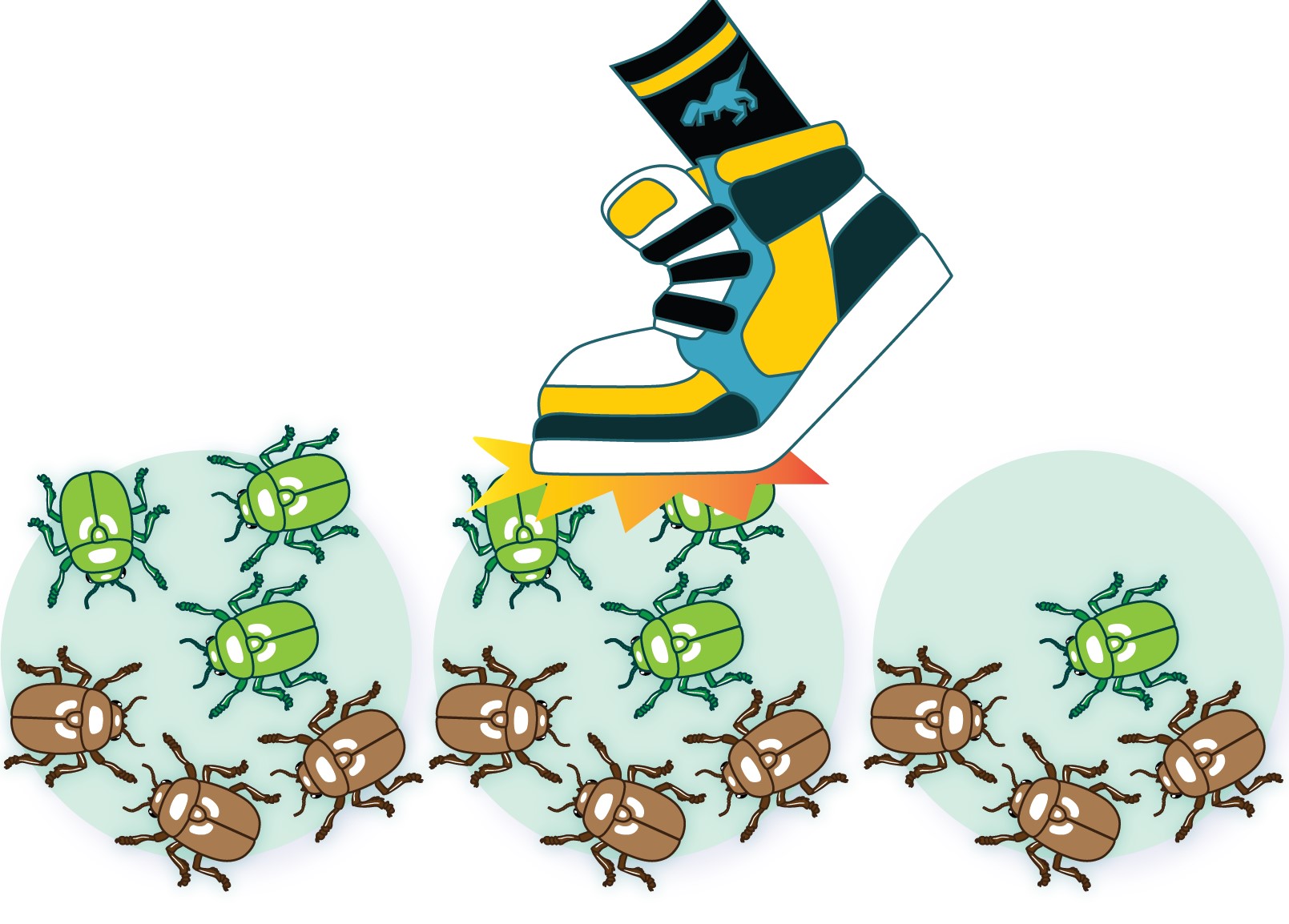
Genetic drift is a fascinating concept in the field of genetics that has long perplexed scientists and researchers. It refers to the random fluctuations in the frequency of genetic traits within a population over time. While natural selection is often considered the primary driving force of evolution, genetic drift can also play a significant role in shaping the genetic makeup of a population.
In this article, we will delve into the intriguing world of genetic drift and explore nine mind-blowing facts that will expand your understanding of this phenomenon. From its impact on small populations to its role in shaping unique genetic adaptations, genetic drift reveals the intricate complexities of evolutionary processes.
Key Takeaways:
- Genetic drift is a random process that can lead to big changes in a small population’s genetic makeup, influencing evolution and even causing extinction.
- In small populations, genetic drift can override natural selection, leading to unpredictable changes and playing a key role in the formation of new species.
Genetic Drift Influences Evolution
Genetic drift is a fundamental force in evolution. It describes the random fluctuations of gene frequencies in a population over time. As individuals with certain genetic variations reproduce more successfully than others, these variations become more or less common in subsequent generations. This can lead to significant changes in the genetic makeup of a population, driving the evolution of new traits and species.
Genetic Drift is More Pronounced in Small Populations
One mind-blowing fact about genetic drift is that its effects are amplified in small populations. In larger populations, genetic diversity tends to be higher, and individual genetic changes are more likely to be diluted. However, in small populations, chance events can have a significant impact on gene frequencies, potentially leading to the fixation or loss of certain alleles.
Genetic Drift Can Lead to Founder Effects
When a small group separates from a larger population and establishes a new colony, genetic drift can result in what is known as a founder effect. This occurs when the new population has limited genetic diversity due to the smaller sample size. The genetic makeup of the founding individuals can have a lasting impact on the subsequent generations, potentially leading to unique genetic characteristics and increased susceptibility to certain genetic disorders.
Genetic Bottlenecks Can Cause Genetic Drift
Genetic bottlenecks, which occur when a large population undergoes a drastic reduction in size, can also drive genetic drift. Natural disasters, disease outbreaks, or human activities can lead to a sudden decrease in population, resulting in limited genetic diversity. This can have long-term consequences, as the surviving individuals become the primary contributors to the gene pool, potentially leading to reduced genetic variation and increased vulnerability to threats.
Genetic Drift Can Neutralize the Effect of Natural Selection
An intriguing aspect of genetic drift is its ability to override the effects of natural selection. While natural selection favors individuals with beneficial traits that improve survival and reproduction, genetic drift operates randomly. In small populations, even individuals with advantageous traits might not succeed in passing them on due to chance alone. As a result, genetic drift can sometimes counteract the selective pressures of natural selection.
Genetic Drift is a Key Process in Speciation
Genetic drift plays a vital role in the formation of new species through a process called speciation. As gene frequencies change within isolated populations, reproductive barriers can emerge, preventing gene flow between them. Over time, these isolated populations accumulate enough genetic differences to be classified as distinct species. Therefore, genetic drift is an essential mechanism driving the diversification of life on Earth.
Genetic Drift is more prevalent in Asexual Organisms
In asexual organisms, which do not undergo sexual reproduction, genetic drift can have a more significant impact. Since there is no genetic recombination or independent assortment, chance events and mutations become the primary drivers of genetic diversity. As a result, genetic drift plays a more pronounced role in shaping the genetic makeup of asexual populations.
Genetic Drift is Unpredictable
One mind-blowing aspect of genetic drift is that it is inherently unpredictable. It is impossible to determine with certainty which alleles will become more or less common in a population over time due to random chance. This unpredictability makes genetic drift a fascinating and ever-present force in the process of evolution.
Genetic Drift Can Lead to Extinction
In small populations, genetic drift can increase the likelihood of extinction. Due to chance events, deleterious alleles can become fixed, leading to a reduced fitness and inability to adapt to changing environments. Over time, this can contribute to the decline and eventual extinction of a population.
As evidenced by these 9 mind-blowing facts, genetic drift is a fascinating phenomenon that significantly impacts the evolution and diversity of life on our planet. Understanding its mechanisms and consequences is essential to comprehending the complexities of the natural world.
So, next time you marvel at the incredible diversity of species around us, remember the profound influence of genetic drift – one of the cornerstones of evolutionary biology!
Conclusion
In conclusion, genetic drift is a fascinating phenomenon that occurs in populations over time. It is a random process that can have significant effects on the genetic makeup of a population. Understanding the concept of genetic drift helps in deciphering the complex dynamics of evolution and population genetics.Through this article, we have explored nine mind-blowing facts about genetic drift. From its role in the evolution of species to its implications in genetic diversity and adaptation, genetic drift has a profound impact on biological systems. We have learned about the different types of genetic drift, such as bottleneck and founder effects, and how they can lead to significant changes in a population’s genetic composition.Moreover, we have discovered how genetic drift can occur in various settings, including small isolated populations and non-random mating. We have also explored the consequences of genetic drift, such as the loss of genetic variation and the potential for the fixation of harmful genetic variants.Overall, genetic drift is a fundamental concept in biology that highlights the role of chance in shaping the genetic diversity and evolution of populations. By understanding the intricacies of genetic drift, we can gain valuable insights into the ongoing processes that drive the incredible diversity of life on our planet.
FAQs
Q: What is genetic drift?
Genetic drift refers to the random fluctuations in the frequency of genetic variants in a population over time, primarily due to chance events.
Q: How does genetic drift differ from natural selection?
While natural selection involves the preferential survival and reproduction of individuals with advantageous traits, genetic drift is a random process that can occur irrespective of the fitness of a particular variant.
Q: What are the two main types of genetic drift?
The two main types of genetic drift are bottleneck effect, which occurs when a population undergoes a drastic reduction in size, and founder effect, which happens when a small group of individuals establishes a new population.
Q: Can genetic drift lead to the fixation of harmful genetic variants?
Yes, genetic drift can lead to the fixation of harmful genetic variants in small populations, as chance events can cause these variants to become the only variants present in the population over time.
Q: How does genetic drift impact genetic diversity?
Genetic drift can reduce genetic diversity within a population over time, as some genetic variants may be lost due to chance events.
Q: Is genetic drift more pronounced in small or large populations?
Genetic drift is generally more pronounced in small populations, where chance events can have a significant impact on the genetic composition of the population.
Q: Can genetic drift occur in human populations?
Yes, genetic drift can occur in human populations, especially in small isolated communities or during population bottlenecks.
Q: Can genetic drift lead to the formation of new species?
In certain cases, genetic drift can contribute to the formation of new species by driving genetic differentiation between populations.
Q: How do scientists study genetic drift?
Scientists study genetic drift through population genetics analysis, including analyzing genetic markers and studying changes in allele frequencies over time.
Genetic drift's mind-blowing facts barely scratch the surface of evolutionary biology's fascinating concepts. Explore gene pools' enigmatic nature, where alleles swim in a vast ocean of genetic possibility. Genetic variation's intriguing facts reveal how diverse traits arise and shape populations. Population genetics' surprising facts uncover the complex interplay between drift, selection, and other evolutionary forces. Dive deeper into these captivating topics to expand your understanding of life's incredible diversity and adaptability.
Was this page helpful?
Our commitment to delivering trustworthy and engaging content is at the heart of what we do. Each fact on our site is contributed by real users like you, bringing a wealth of diverse insights and information. To ensure the highest standards of accuracy and reliability, our dedicated editors meticulously review each submission. This process guarantees that the facts we share are not only fascinating but also credible. Trust in our commitment to quality and authenticity as you explore and learn with us.


